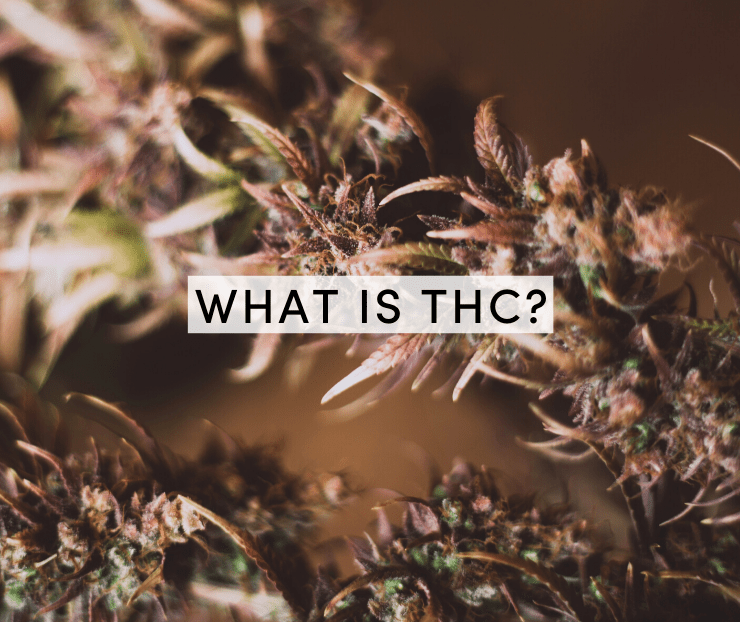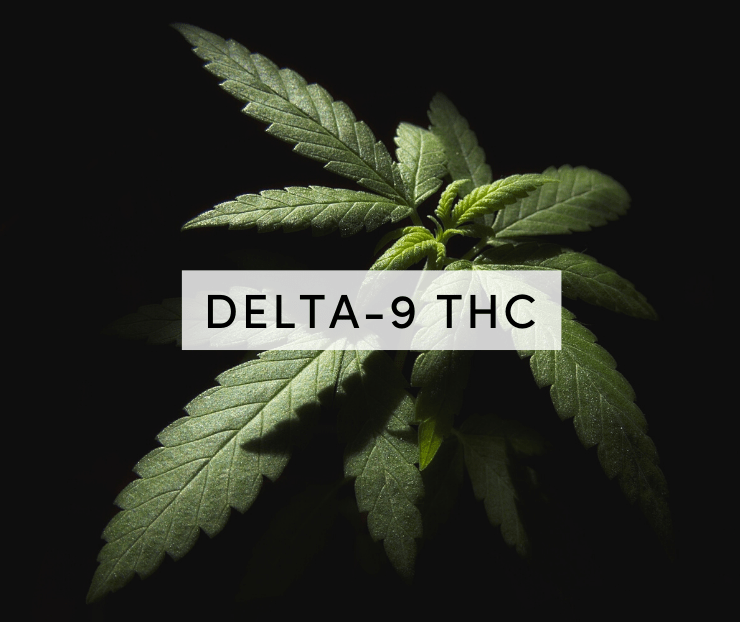What is Delta 9 THC? The Misunderstood Cannabinoid Explained

Posted on July 1st, 2021
Delta 9 THC, short for delta-9-tetrahydrocannabinol, is perhaps the most well-known compound of the cannabis plant. It’s the main psychoactive ingredient in marijuana, responsible for making you high. Now, the cannabis plant contains more than 400 different compounds. Of these, about 66 are cannabinoids, with THC being the most prominent. Cannabinoids are a class of compounds that interact with cannabinoid receptors in your body, producing various effects. But what is THC? There’s more to it than you might think. This article takes a detailed look at everything you need to know about the most infamous cannabinoid.
What is Delta 9 THC?
As mentioned above, THC is the primary cannabinoid responsible for cannabis’ psychoactive and intoxicating effects.
One important fact that you might not know is that THC is practically non-existent in live cannabis plants. Rather, it’s found as tetrahydrocannabinolic acid (THCA), the non-active version of the compound. THCA is an inactive compound in the trichomes of live cannabis plants. This essentially means that consuming raw cannabis won’t get you high.
Decarboxylation
We activate THC through a process called decarboxylation. As the name suggests, decarboxylation involves the removal of a carboxyl group (COOH) from the carbon chain of THCA. Simply put, decarboxylation removes the acid molecule in THCA, activating THC.
Heat and time are the two primary catalysts of the decarboxylation process. Heating, drying, and curing raw cannabis plant converts THCA in the plant material to delta 9 THC. However, the drying and curing processes take a significantly longer time to complete this process. Smoking and vaping cannabis instantaneously decarboxylate cannabinoids since there are high temperatures involved. Cooking up edibles is another way to decarboxylate the acidic forms of your favorite cannabinoids including THC.
The THCA in cannabis typically starts to decarboxylate after being exposed to approximately 220 degrees Fahrenheit for about 30 to 45 minutes. However, it takes more time to fully decarboxylate the cannabinoid. To preserve terpenes, the compounds responsible for the unique aroma of each cannabis, you should decarboxylate your cannabis at lower temperatures for a longer time. In addition to providing the unique scent of every cannabis plant, terpenes provide their own unique therapeutic benefits. They also work together with other cannabinoids in a process called the entourage effect to increase the potential benefits of these cannabinoids.
Please note: Exposure to temperatures above 300 degrees compromises the integrity of cannabinoids and terpenes. Thus, it is crucial to stick to temperatures in the 200’s range.
What is THC Doing in the Body?
After understanding what THC is, it is only right that we take a look at how it works. THC works by interacting with the body’s endocannabinoid system (ECS). The ECS is a complex system that is responsible for regulating a wide range of physiological, emotional, and cognitive functions. It is responsible for maintaining homeostasis (state of balance) within the body.
The endocannabinoid system primarily consists of three components:
- Endogenous cannabinoids, otherwise referred to as endocannabinoids. These are cannabinoids that are naturally produced by the body, they include, anandamide (AEA) and 2-arachidonoylglycerol (2-AG)
- An extensive network of cannabinoid receptors throughout the brain, the central nervous system, and other areas of the body. Cannabinoid receptors are divided into two types; CB1 and CB2 receptors.
- Endocannabinoid metabolic enzymes. These are the enzymes responsible for metabolizing the various endocannabinoids. They include fatty acid amide hydrolase (FAAH) and monoacylglycerol lipase (MAGL).
THC works in the same way as your body’s natural endocannabinoids. However, it tends to affect the body in a different way. It produces effects such as:
– Stimulating the release of dopamine, promoting feelings of relaxation, and euphoria.
– Physiological responses such as increased hunger, reduced inflammation, and so on.
– Effects on cognitive functions such as thinking and decision-making, memory, and physical movement and coordination.
Typically, the effects of THC start to kick in about 10 to 30 minutes after ingestion but last for approximately two hours. However, its effects on physical movement and coordination can continue even after the high feeling has worn out.
 Applications of Delta 9 THC
Applications of Delta 9 THC
THC is popular for both recreational and medicinal purposes. Users of recreational marijuana seek the high and euphoric feeling produced by THC. On the other hand, THC is infused into edibles, oils, syrups, medicines, and topicals such as balms used to treat inflammation. THC is also commonly used to help pets such as dogs with anxiety and pain.
Currently, dronabinol is the only FDA-approved THC medication. It is made from synthetic THC and treats nausea and vomiting from cancer medications and also improve the appetites of individuals living with AIDS. The approval of this drug has increased the hope of THC being used for various other health conditions.
According to a study on mice in 2016, in small enough doses, THC can improve memory function.
Can You Overdose on THC?
Many claim that marijuana is completely harmless, while others will claim that it is as dangerous as opioids. However, to date, nobody has reported any death resulting directly from cannabis. This is according to data from the Centers for Disease Control and Prevention (CDC). It is effectively impossible to ingest a toxic amount of THC.
While you can’t die from the excessive use of THC, there is always a high risk of overdoing it and suffering some negative reactions.
Different people will have different tolerance levels to cannabis and THC. So, it is usually difficult to specify which amount is too much.
However, THC edibles generally have a higher likelihood of causing negative reactions. This is because people have a tendency to over-consume these products. As opposed to smoking or vaping dried cannabis, which produces effects in a matter of minutes, eating an edible usually takes anywhere from 30 minutes to 2 hours for users to start feeling the effects. As a result, most people will end up consuming more in the false belief that edibles are weak and ineffective.
To be on the safe side, it is wise to start with a very small amount and wait at least 2 hours to see how it affects your body before increasing. This is particularly important if it’s your first time taking edibles.
It is important to keep in mind that taking cannabis together with alcohol can have some disastrous effects for some people. Being “cross faded” can be quite uncomfortable.
Negative Effects of Delta 9 THC
Some of the common negative side-effects of THC include:
– Headaches
– Confusion
– Concentration difficulties
– Increased thirst
– Increased heart rate
– Dizziness
– Fatigue
– Slower reaction times
In some serious cases, excessive cannabis use can lead to hallucinations and panic attacks. Higher concentrations of THC in cannabis will cause more severe side effects.
Suffering a bad reaction to cannabis isn’t a life-threatening situation. But it is important to seek immediate help if someone starts experiencing hallucinations or signs of psychosis.
 Legal Status
Legal Status
At the moment, marijuana is legal for all adults for medicinal purposes in 34 states and legal for recreational purposes in 11 states. However, as things stand, the legalization of THC may start becoming more widespread in the foreseeable future.
Back in 2018, the New York State Health Department reported that the positive effects of having a regulated marijuana market far outweigh its negative effects. In fact, a record-high 68% of Americans support the legalization of marijuana for recreational purposes. 91% of Americans support the legalization of marijuana for medicinal purposes.
THC vs. CBD
CBD, formally “cannabidiol,” has recently been gaining a lot of attention due to its supposed therapeutic benefits. However, many people have been wondering how it relates to THC and if it produces the same effects as THC.
Despite THC and CBD having similar chemical makeups and being present in the cannabis plant, they affect the body differently. As you’ve learned, THC is the active compound responsible for producing the “high” effect. However, CBD can offset these effects of THC. Taking a cannabis product with high CBD content can counterbalance the negative effects of THC. THC may increase levels of anxiety and stress in some cases. However, CBD can help moderate these effects.
Conclusion
Hopefully, this article has helped you better understand what THC is and its effects on the body. If you are interested in dipping your toes into the world of marijuana, it is important that you exercise caution and more importantly, consult your doctor if you take any kind of medication.



